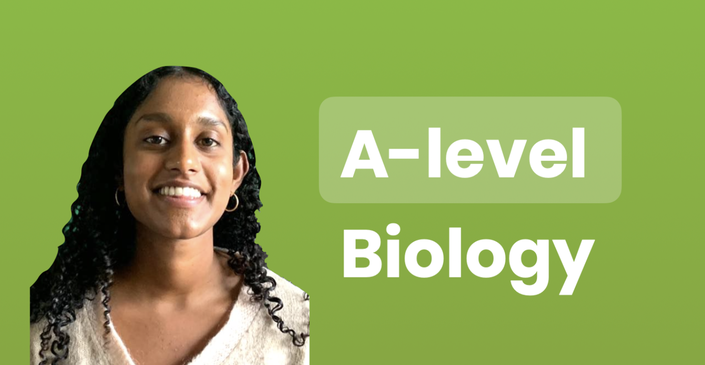
Study Mind General A-Level / IB Biology Course 🧬🔬
Applicable to ALL Exam Boards
Start your Free Biology TrialCourses Included with Purchase
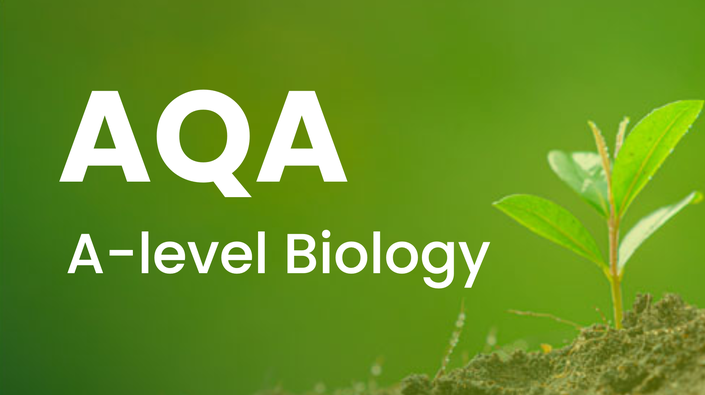

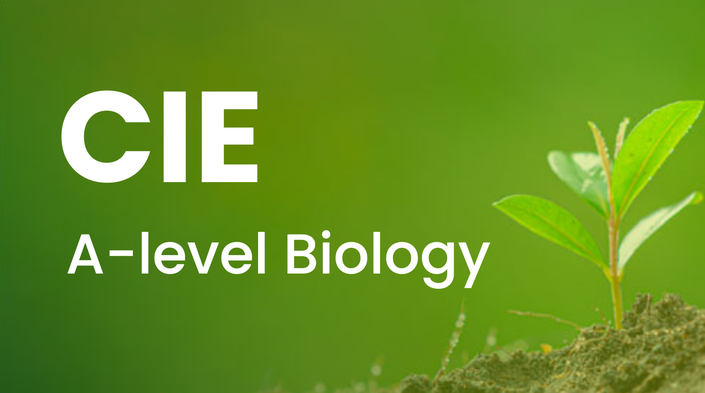

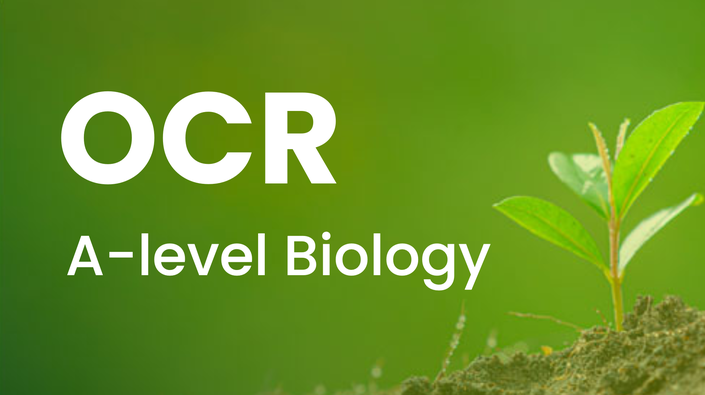

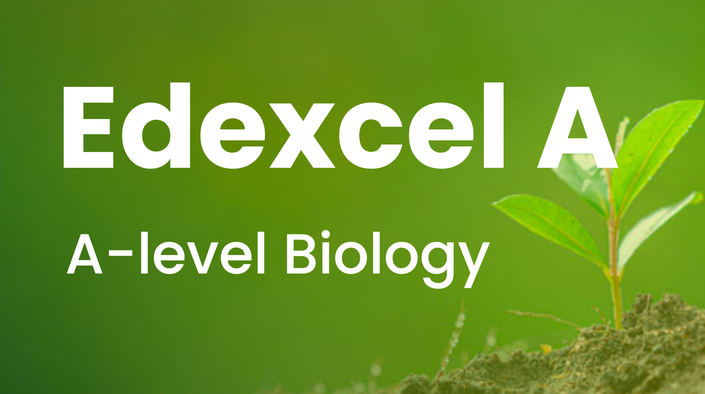

Original Price: £76
Get started now!
You will receive access to ALL A-level & IB Biology Boards Courses
We have a General Biology course which covers all Exam Boards for A-level and IB. We also have specific courses for AQA, Edexcel, CIE, Pearson, OCR, with tailored tutorials matching to the specification. You will receive access to all of these courses
A-Level Biology is hard, there's no denying it! Biology is notorious for the vast amount of content you're expected to know. From cell biology to ecology, at times it can feel like you’ll never have time to learn it all. We know that A-Level Biology can be a struggle, however with some careful preparation you can be one of the lucky 8% of students who receive an A* grade!
We're here to help and wanted to design the perfect, comprehensive revision platform for A-Level students. This course contains videos, textbooks, flashcards, past papers and more, so you will always have a variety of resources for each topic.
When you're ready to put your knowledge into practice we have collated all exam questions from 2003 onwards into our past paper question bank. You'll be sure to perfect your exam technique and all the different ways examiner's can ask questions for each topic.
Best of all, our course has been verified and certified by the UK's Leading A-Level Biology Examiners.
The Study Mind A-Level Biology Course includes:
- 100+ Video Tutorials for all parts of the A-Level Biology specification
- Revision notes for each chapter
- Exclusive tips from A-Level examiners
- Suitable for every specification
- Past paper questions sorted by topic and specification
- 5000+ Flashcards
- Monthly Access
- To gain access to all of this, click Enrol Now to sign up for a FREE trial.
We're so confident that our course will improve your grades that if you don't achieve an A or A* grade we'll give you your money back - no questions asked!
Course Curriculum
-
PreviewBiological Molecules (6:24)
-
PreviewPolymers (4:43)
-
PreviewCarbohydrates: Monosaccharides (8:23)
-
PreviewCarbohydrates: Disaccharides (5:11)
-
PreviewCarbohydrates: Polysaccharides (5:24)
-
PreviewFunction of Polysaccharides (19:18)
-
PreviewLipids and Triglycerides (4:20)
-
PreviewEster Bonding (6:36)
-
PreviewUses of Triglycerides (5:58)
-
PreviewPhospholipids: Introduction (3:04)
-
PreviewPhospholipid Bilayer (3:03)
-
PreviewProtein and Amino Acids: An Introduction (2:44)
-
PreviewProtein Formation (4:52)
-
PreviewProtein Structures: Primary and Secondary Structures (3:54)
-
PreviewProtein Structures: Tertiary and Quaternary Structures (9:50)
-
PreviewProtein Structures: Globular and Fibrous Proteins (5:28)
-
PreviewTesting for Carbohydrates (17:35)
-
PreviewTesting for Lipids and Proteins (9:35)
-
PreviewEnzymes: Introduction (5:36)
-
PreviewStructure of Nucleotides (10:01)
-
StartPolynucleotides (6:03)
-
StartDNA Structure and the Double Helix (4:17)
-
StartDNA Replication (7:36)
-
StartLife Cycle and Replication of Viruses (3:51)
-
StartStudying Cells: Light Microscopes (5:48)
-
StartStudying Cells: Electron Microscopes (5:58)
-
StartCalculating Cell Size (6:19)
-
StartMagnification and Resolution (12:14)
-
StartCell Division: Chromsomes (6:28)
-
StartCell Division: The Cell Cycle (10:17)
-
StartCell Division: Phases of Mitosis (16:08)
-
StartCell Division: Checkpoints and Mutations (8:57)
-
StartStructure of Cell Membranes (10:28)
-
StartFactors Affecting Cell Membrane Structure (11:00)
-
StartFunction of Cell Membranes (14:01)
-
StartSignalling Across Cell Membranes (8:12)
-
StartTransport Across Membranes: Diffusion (9:34)
-
StartTransport Across Membranes: Osmosis (11:12)
-
StartInvestigating Transport Across Membranes (32:58)
-
StartTransport Across Membranes: Active Transport (15:56)
-
StartPathogens and Infectious Diseases (17:47)
-
StartPrimary Defences Against Pathogens (11:35)
-
StartIntroduction to the Immune System (12:51)
-
StartThe Innate Immune Response (7:03)
-
StartThe Adaptive Immune Response (16:44)
-
StartStructure and Function of Antibodies (12:27)
-
StartTypes of Immunity and Vaccination (16:24)
-
StartBacteria, Antibiotics, and Other Sources of Medicines (11:31)
-
StartMicrobial Techniques (7:31)
-
StartThe Need for Exchange Surfaces (2:59)
-
StartGeneral Features of Exchange Surface (3:03)
-
StartStructure of the Lungs (7:57)
-
StartVentilation (3:47)
-
StartPulmonary Ventilation Rate (6:21)
-
StartLung Disease (11:56)
-
StartGas Exchange in Insects (2:23)
-
StartGas Exchange in Plants (1:25)
-
StartIntroduction to Xerophytes (1:35)
-
StartExamples of Xerophytes (2:11)
-
StartThe Structure and Function of Blood Vessels (15:38)
-
StartExchange in the Capillaries (11:44)
-
StartTransport of Oxygen (20:23)
-
StartStructure of the Heart (34:08)
-
StartThe Xylem (6:24)
-
StartThe Pathways and Movement of Water into the Roots and Xylem (8:35)
-
StartIntroduction to Transpiration (6:30)
-
StartImportance of and Evidence for Transpiration (4:09)
-
StartThe Phloem (4:55)
-
StartEvidence of the Mass Flow Hypothesis (10:18)
-
StartGenes and Protein Synthesis (5:28)
-
StartIntroducing the Genetic Code (5:25)
-
StartFeatures of the Genetic Code (15:46)
-
StartMessenger RNA (15:27)
-
StartTranscription (19:52)
-
StartTransfer RNA (13:38)
-
StartImportance of Meiosis (6:08)
-
StartCell Division by Meiosis (23:48)
-
StartHow Meiosis Produces Variation (12:02)
-
StartChromosome Mutations (15:35)
-
StartTypes of Variation (14:52)
-
StartMechanism of Natural Selection (19:19)
-
StartTypes of Selection (14:22)
-
StartClassifying Organsims (5:41)
-
StartPhylogeny and Classification (4:25)
-
StartThe Three Domain System (9:50)
-
StartIntroducing Biodiversity (6:58)
-
StartBiodiversity Calculations (9:54)
-
StartFactors Affecting Biodiversity (10:36)
-
StartCalculating Genetic Diversity (10:33)
-
StartBiodiversity and Gene Technology (6:42)
-
StartOverview of Photosynthesis (1:18)
-
StartSite of Photosynthesis (3:44)
-
StartPhotosystems and Photosynthetic Pigments (2:25)
-
StartThe 2 Stages of Photosynthesis (7:00)
-
StartThe Structure of ATP (1:51)
-
StartAnaerobic Respiration (4:07)
-
StartAnaerobic Respiration in Mammals, Plants and Fungi (4:44)
-
StartTrophic Levels (2:18)
-
StartGross Primary Production (1:06)
-
StartMeasuring Biomass (4:52)
-
StartTransfer of Biomass (5:05)
-
StartSources of Biomass Loss (2:21)
-
StartReducing Biomass Loss (4:00)
-
StartIntroduction to Nutrient Cycles (2:35)
-
StartNitrogen Cycle: Fixation and Ammonification (3:33)
-
StartThe Phosphorus Cycle (8:25)
-
StartNitrogen Cycle: Nitrification and Denitrification (2:57)
-
StartTaxis and Kinesis (4:40)
-
StartThe Reflex Arc (5:57)
-
StartPlant Responses to Changes in the Environment (3:31)
-
StartExperiments to Show Phototropism (3:17)
-
StartNervous Control (5:09)
-
StartPacinian Corpuscle (2:52)
-
StartPhotoreceptors (3:34)
-
StartThe Retina (3:10)
-
StartControlling Heart Rate (5:48)
-
StartThermoregulation (5:59)
-
StartThe Resting Potential (11:36)
-
StartDepolarisation (6:12)
-
StartDepolarisation and Repolarisation in the Action Potential (11:48)
-
StartHyperpolarisation and Transmission of the Action Potential (5:47)
-
StartAll or Nothing Principle (4:00)
-
StartThe Refractory Period (3:50)
-
StartMyelination (6:56)
-
StartFactors Affecting the Speed of Transmission (4:12)
-
StartThe Structure of the Synapse (3:29)
-
StartSynaptic Transmission (6:00)
-
StartInhibitory Synapses (4:31)
-
StartFeatures of Synapses (7:23)
-
StartThe Neuromuscular Junction (10:42)
-
StartHow Muscles Allow Movement (4:58)
-
StartThe Structure of Mammalian Muscles (2:35)
-
StartSlow and Fast Twitch Muscles (3:02)
-
StartThe Structure of Myofibrils (4:01)
-
StartThe Role of Troponin and Tropomyosin (6:26)
-
StartThe Ultrastructure of the Sacromere During Contraction (8:25)
-
StartSources of ATP During Contraction (6:01)
-
StartPrinciples of Homeostasis (6:52)
-
StartNegative Feedback (2:45)
-
StartIntroduction to Communication Systems (4:15)
-
StartHormones (1:42)
-
StartMode of Action of Hormones (3:12)
-
StartThe Pancreas (3:29)
-
StartAction of Insulin (4:08)
-
StartAction of Glucagon (4:11)
-
StartAction of Adrenaline (3:48)
-
StartThe Role of the Liver in Glucose Regulation (2:58)
-
StartTypes of Diabetes (6:07)
-
StartTreating Diabetes (3:25)
-
StartThe Role of the Kidney (2:16)
-
StartThe Structure of the Kidney (6:37)
-
StartUltrafiltration (2:37)
-
StartSelective Reabsoprtion (4:07)
-
StartThe Loop of Henle (3:21)
-
StartProducing Urine (6:38)
-
StartADH and Water Potential (1:20)
-
StartReleasing ADH (1:39)
-
StartThe Action of ADH (2:35)
-
StartOsmoreglation (4:40)
-
StartGenotype & Phenotype (3:19)
-
StartTerms in Inheritance (3:09)
-
StartGenetic Crosses (7:28)
-
StartMonohybrid Crosses (2:14)
-
StartMonohybrid Crosses Codominance (2:50)
-
StartDihybrid Crosses (3:11)
-
StartAutosomal Linkage (2:17)
-
StartSex Linkage (5:23)
-
StartIntroduction to Epistasis (1:59)
-
StartTypes of Epistasis (2:08)
-
StartIntroduction to the Chi Squared Test (1:34)
-
StartUsing the Chi Squared Test (6:06)
-
StartAdaptations of Organisms (4:42)
-
StartSources of Variation (2:45)
-
StartThe Gene Pool (1:36)
-
StartPopulation Genetics (4:51)
-
StartIntroducing the Hardy Weinberg Principle (1:32)
-
StartUsing the Hardy Weinberg Principle (2:15)
-
StartEvolutionary Process in Small Populations (3:15)
-
StartSpeciation (6:19)
-
StartComponents of Ecosystems (1:39)
-
StartEcological Niches (1:56)
-
StartPopulation Growth (6:22)
-
StartInteractions Between Organisms (4:36)
-
StartSuccession (4:27)
-
StartManaging Biological Resources (5:09)
-
StartConservation and Preservation (4:08)
-
StartIntroduction to Mutations (5:16)
-
StartTypes of Gene Mutations (5:34)
-
StartDuplicaton & Inversion Mutations (2:13)
-
StartEffects of Mutations on Protein Production (2:01)
-
StartThe Evolutionary Effects of Mutations (5:04)
-
StartChromosome Translocations (1:41)
-
StartStem Cells and Differentiation (1:11)
-
StartGene Expression in Differentiated Cells (4:19)
-
StartTypes and Sources of Stem Cells (2:50)
-
StartInduced Pluripotent Stem Cells (1:23)
-
StartUses of Stem Cells (3:52)
-
StartThe Ethics of Stem Cell Use (3:34)
-
StartTranscriptional Regulation in Eukaryotes (3:38)
-
StartEpigenetics - DNA Methylation (3:09)
-
StartEpigenetics - Histone Modification (2:55)
-
StartPost-Transcriptional Regulation: RNA Interference (3:55)
-
StartTypes of Tumours (3:00)
-
StartOncogenes (3:38)
-
StartTumour Suppressor Genes (2:59)
-
StartEpigentics and Cancer (5:22)
-
StartOestrogen & Breast Cancer (2:55)
-
StartLifestyle Risk Factors for Cancer (2:49)
-
StartWhole Genome Sequencing (2:32)
-
StartComparing Genomes Between Individuals (6:21)
-
StartGenomes to Proteomes (1:22)
-
StartPolymerase Chain Reaction (4:26)
-
StartGel Electrophoresis: Separation of DNA Fragments (4:06)
-
StartGel Electrophoresis: Visualisation of DNA Fragments (2:20)
-
StartIsolating the Desired Gene (5:29)
-
StartCreating a Recombinant Plasmid (2:46)
-
StartSecond Marker Genes: Antibiotic Resistance (1:29)
-
StartBenefits & Risks of GM Bacteria (1:52)
-
StartGene Therapy (3:23)
-
StartPrinciples of Genetic Screening (5:25)
-
StartApplications of Genetic Screening (2:55)
-
StartDNA Profiling (3:42)
-
StartApplications of DNA Profiling (3:50)
-
StartThe Krebs Cycle (6:29)
-
StartOxidative Phosphorylation and the Electron Transport Chain (4:48)
-
StartOxidative Phosphorylation and Chemiosmosis (6:00)
-
StartRespiration of Different Respiratory Substrates (1:36)
-
StartRespiratory Substrates (1:50)
-
StartMarker Genes (1:28)
-
StartThe Synthesis and Hydrolysis of ATP (3:05)
-
StartATP as an Energy Source (3:17)
-
StartRoles of ATP (2:25)
